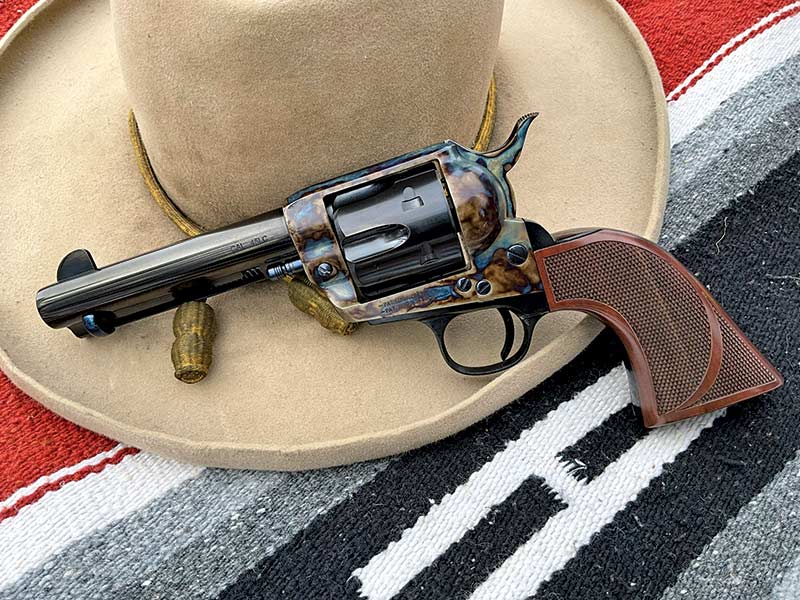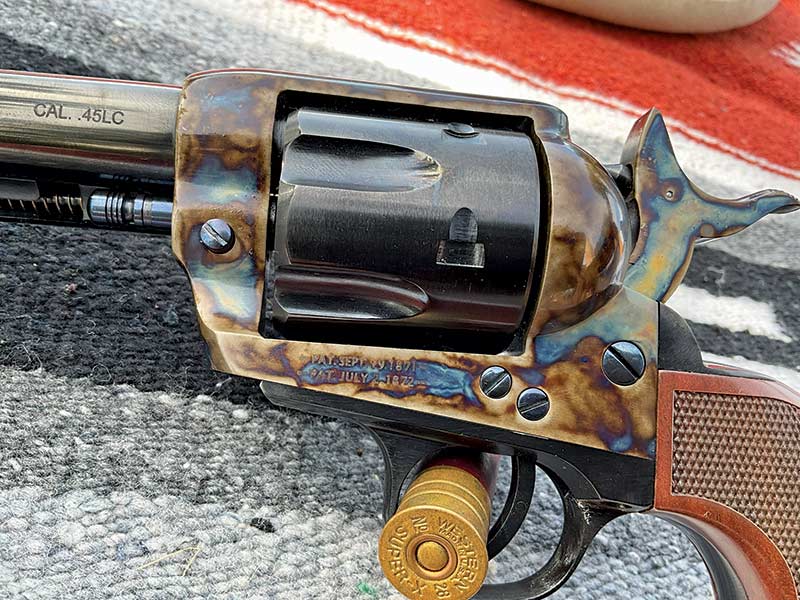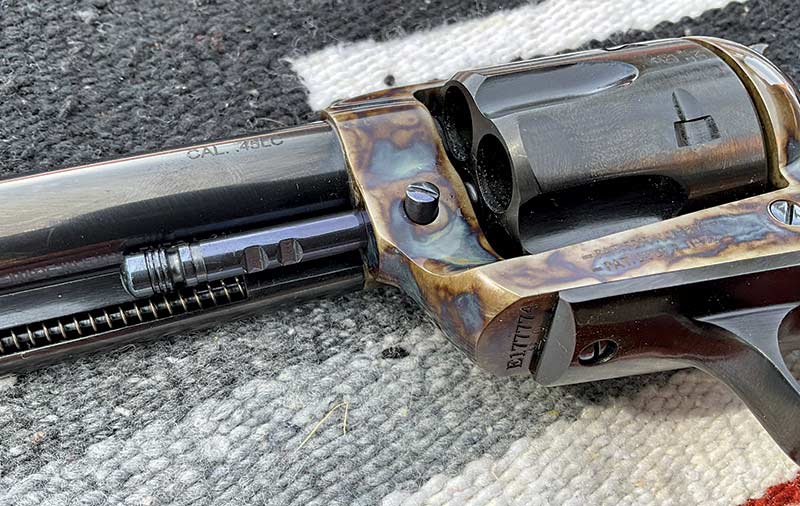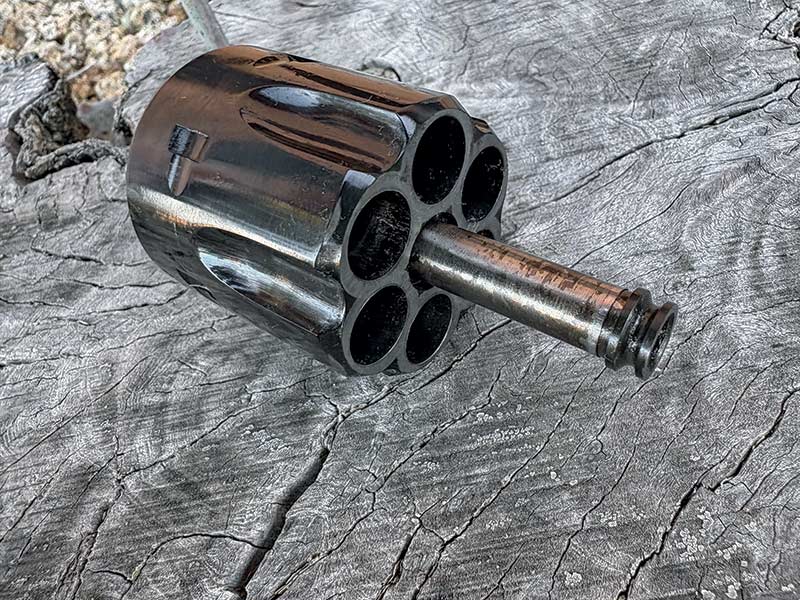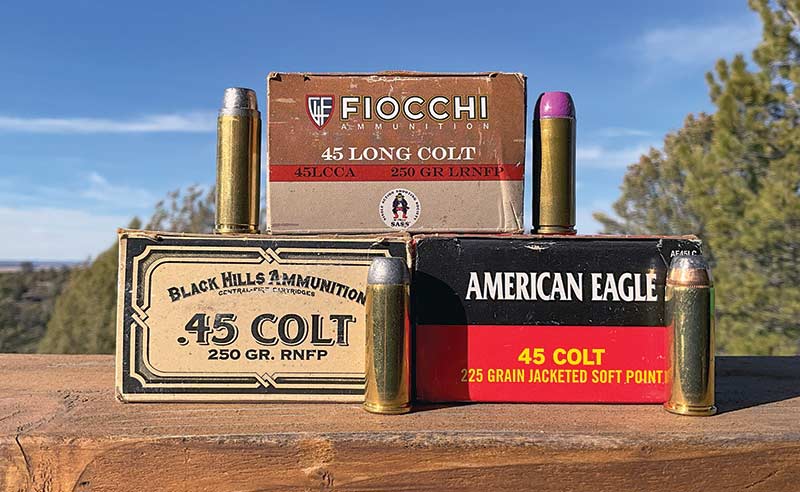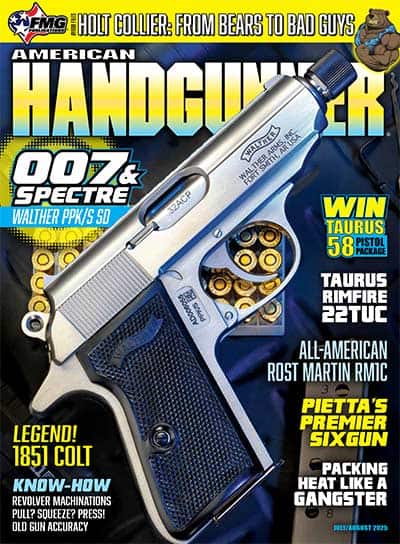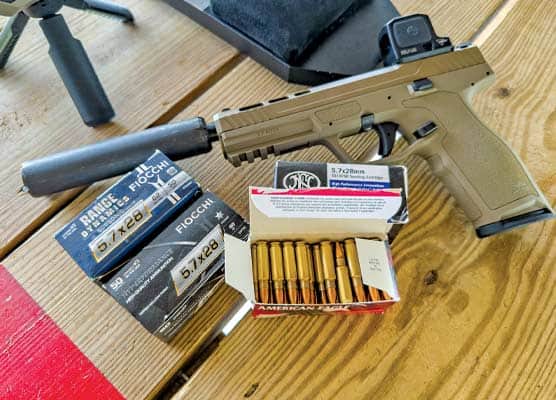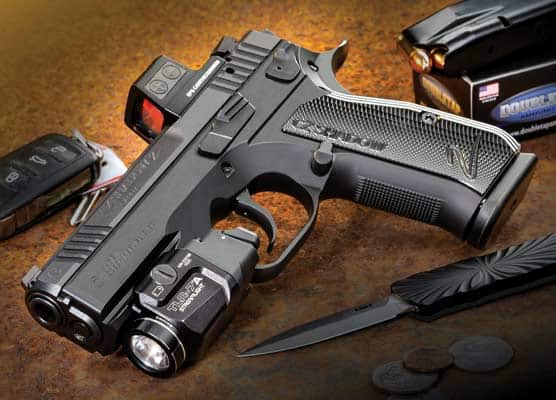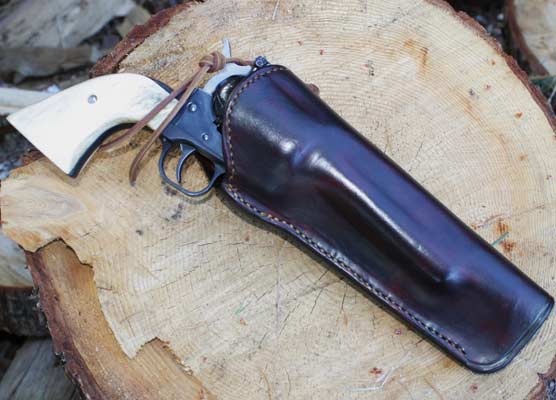The Pietta 1873 Premier
Bone Case Hardening From Pietta’s Custom Shop
The Colt Peacemaker, known as the Colt Single Action Army (SAA) or M1873, is a familiar sight in movies, TV series, and Western novels. Even if people don’t know it by name, they know the classic shape. Since 1873, it has been a favorite of lawmen, outlaws, cavalry troopers, ranchers, Native Americans, and anyone else who needed an accurate, reliable, powerful sidearm. Production lasted until 1940, when lagging sales and urgent WWII arms contracts caused Colt to mothball it.
By the early 1950s, America was in love with Westerns in print, on the radio, and on the silver screen and clamoring for the Colt Peacemaker to return, but Colt wasn’t listening. Into the void stepped Great Western Arms, making an almost identical copy of the Peacemaker. While Colt jumped back into the single-action market in 1955 with their updated Colt Single Action Army, the horse was already out of the barn, and other companies like Ruger were offering their versions.
In 1962, InterContinental Arms started importing the Dakota revolver, a Colt look-alike made by Armi Jager. Other Italian manufacturers took their turn at bat. Some, like Armi San Marco and Armi San Paolo, struck out, while others, like Uberti and Pietta, hit home runs.
Details Matter
Some manufacturers made modifications that were easier to machine but didn’t look right to a discerning eye. One positive change they made is the ever-so-slight increase in cylinder size. This allows the walls of the chambers to be thicker and withstand higher pressures.
In the early 1980s, Cowboy Action Shooting (CAS) was gaining popularity. Many shooters sought authenticity in their firearms, and companies like Cimarron Firearms started demanding that the details look correct. Quality and options increased as tens of thousands of shooters joined the Single Action Shooting Society (SASS) and the National Congress of Old West Shootists (NCOWS) and demanded historical accuracy from gun makers.
Sadly, 20 years before the birth of cowboy action shooting, Great Western Firearms, the company that championed bringing a copy of the Colt to market, went out of business. The company that was to become EMF bought the inventory and trademark of Great Western Arms, but their attempts to resuscitate the brand failed. Ironically, 14 years after Great Western Arms closed its doors, John Wayne would carry a Great Western Arms “Colt” in his last and most memorable movie, The Shootist.
Great Western Reborn
In 2004, the cowboy action shooting craze was still going strong, so EMF partnered with Pietta to introduce the Great Western II line, which follows the original Colt Single Action Army/Peacemaker tradition. Over the past two decades, the line has featured everything from their short-barreled, no-ejector Sheriff Model to long-barreled Ned Buntline tribute revolvers made famous in the old Wyatt Earp television series. Many of their models feature unique features such as laser engraving, fancy or special grips, nickel plating, lowered hammers, and even stainless-steel construction. One thing they didn’t offer was genuine bone and charcoal color case hardening on the frame. That changed in early 2025.
Authentic Case Hardening
In the 1800s, iron and steel alloys were not as strong as today. Many manufacturers heat-treated their frames and receivers in a carbon-rich mixture of bone and charcoal. The carbon infused into the steel and provided a razor-thin layer of durability and protection. A side effect was an unpredictable blue, brown, rose and straw coloring pattern unique to each gun. Colt did this on many of their revolvers into the early 1900s. As steel alloys continued to improve, color case hardening was no longer needed. Still, for tradition’s sake, Colt continues the practice on their Single Action Army model.
Over the decades, other manufacturers have sought to maintain the tradition of color-case hardening, but most have used lesser methods to cut costs. In most cases, the technique was a potassium cyanide salt bath. Technically, it isn’t a form of hardening and only infuses the beautiful peacock coloring into the already-hardened steel frame, but the look isn’t the same.
Old School Resurrection
While attending the 2024 Shot Show, I was drawn to the Pietta booth from several isles away because a revolver glinted like Excalibur in the morning sun. I instantly knew the frame was genuine bone and charcoal color case hardening. The guys manning the booth were fellow SASS members with whom I had shot. We all drooled and giggled like schoolgirls as we gazed at the two prototype revolvers inside the glass case. After providing the details of what we hoped would become a reality, we parted ways with the promise to stay current on the progress of bringing the Pietta Premier to market.
Fast forward to December 2024. Pietta Firearms confirmed the Premier Collection by their Custom Shop was getting ready to ship to distributors in early 2025. Pietta upgraded their line of single-action revolvers and partnered with Park West Arms (formerly Dakota Arms) to finish their Pietta Custom Shop collection. The color case hardening was superb compared to what other manufacturers have available now. Of course, I requested one of these custom single-action revolvers to test, promising I would keep any drool wiped off.
You’ll notice I said Premier Collection, meaning there is more than one model. There are many models based on caliber and barrel length. The current calibers are .38/357 Magnum, .44-40 (.44 WCF), and .45 Colt. Barrel lengths include 4¾”, 5½” and my favorite, 7½”. Other models, including the 1851 and 1860 percussion revolvers, may be added later.
Authentic Handling
The model I tested was chambered in the original .45 Colt, a cartridge I compete with regularly in SASS matches. The barrel was 4¾” long, sometimes called the Gunfighter or Civilian model, which made the revolver’s balance perfect.
Many traditionalists have a hang-up on Colt clones that don’t follow the original when cocking the hammer. From the beginning, an authentic Colt SAA has four distinct clicks as the hammer is cocked. If one listens closely, they can hear it spell C-O-L-T. The first click is the hammer catching the safety notch. The firing pin is recessed in this position and no longer extends into the cylinder window or riding on a live primer. However, within months of being in the hands of frontiersmen and cavalry troopers, they realized the safety notch was easily sheared off if the hammer was struck hard, causing the gun to fire. Civilians quickly learned only to load five chambers and keep the hammer down on an empty.
The second click is the loading notch. In this position, the bolt drops, and the cylinder turns clockwise freely for loading. The third click as the hammer is drawn back is the bolt rising into place as the cylinder chamber aligns with the barrel. The fourth and final click is the trigger catching the shelf on the hammer in the firing position. To make the revolver style safer, some manufacturers have added internal safeties or gone to a transfer-bar safety and, in doing so, lost one of the clicks. This is a deal breaker for many shooters who demand their guns to be true to tradition. For those people, I am happy to report the Premier doesn’t have internal safety and still spells C-O-L-T! I also found the action smooth as a knife through butter with perfect timing.
The rear sight channel is squared off to allow better front sight alignment. Like the originals from the 1800s, the front of the cylinder is heavily beveled, making it easier to holster. The Grade III walnut grips are hand-checkered and feature a pattern that tricked my eyes into doing a double take as it appears to be a bird’s head grip at first glance. Many markings are tucked under the barrel to make the gun look cleaner and to hide it from casual view. The cylinder pin has two positions: One allows the hammer to fall normally, and the other prevents the firing pin from reaching the primer. The position is easily changed, but I still prefer to have the hammer down on an empty chamber.
Details that only Colt collectors may notice on the 1873 Premier are the use of nitre-blue screws, cylinder pin and ejector’s head, the sharply cut hammer thumb serrations, staked-in recoil plate, the serial number on the face of the cylinder, and a removable cylinder bushing. The cylinder bushing is a press fit, not finger loose like the originals.
I tested the gun with factory and handloads. In all cases, the gun functioned flawlessly. For those who desire the look and feel of a First Generation Colt SAA, the Premier hits the mark without the Colt price tag. The one thing I would like to see changed is using real stamped roll marks, not laser engraving for barrel and frame markings. I found I had to keep turning the gun to catch the light just right to read them at times and roll marks are historically accurate. If the Premier Collection from Pietta’s Custom Shop interests you, I recommend jumping quickly. Shooters I talk to are lining up to snag them as they make it to the open market. MSRP: $1,175
For more info: PiettaFirearms.com

